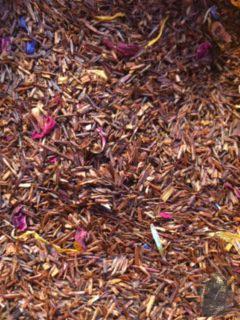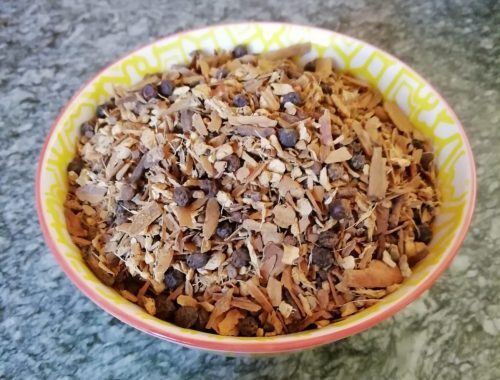
Rooibos – the caffeine free tea alternative
The history of rooibos is quite different from the history of green or black tea. It is especially not so old.
It is not exactly known how old the history of rooibos is, and it is not even known when exactly the population of South Africa began to use it as an infusion. The marketing, however, started in 1904, when wild rooibos was processed and later cultivated. In Latin, this plant is called Aspalathus linearis and belongs to the family of legumes like beans or clover. The rooibos plant only grows in South Africa, more precisely in the mountains near Cape Town. The word Rooibos is Afrikaans and means red bush. However, the bush itself is green, only after fermentation the finely cut leaves turn copper-red.
The plant is a 1-1.5 meter tall shrub with long branches from which many branches with small leaves emerge. The leaves are reminiscent of conifer needles and the yellow flowers are similar to those of genista. After being picked, the branches are cut into pieces of about 4 cm in size, crushed to allow the cell sap to escape and then moistened with water and piled up. They then ferment for 8-24 hours. During this process, the leaves change their colour. During the fermentation process, they also develop their typical aroma, which can be described as fruity. After fermentation, it’s dried and possibly flavoured. The rooibos gives a beautiful red-brown infusion.
Rooibos contains no caffeine
Caffeine has a stimulating effect and wakes you up. It is contained in coffee, for example, or in all teas made from Camellia sinensis.
But Rooibos does not contain this substance. This means that you can drink it in large quantities at any time of the day and at any age. But it does not help you to wake up in the morning ?
How does Rooibos taste
It tastes rather sweet and therefore you can enjoy it very well without sugar. It is naturally fruity, but often it is flavoured with fruit aromas like orange, lemon or passion fruit or with spices. Vanilla and cinnamon are very popular. I personally also like Rooibos Earl Grey, which is a real caffeine-free alternative to black Earl Grey tea.
Preparation of Rooibos

Rooibos is not sensitive, it also forgives harder water and a minute longer or shorter infusion time does not bother it either. Even if it stays longer in the infusion, it stays good, it becomes tastier. In Africa, they leave it in the water for hours.
It can be enjoyed warm or cold and can be mixed with fruit juice. In summer with a dash of lemon juice, it is very refreshing.
As with green tea, it is also possible to make several infusions using the same leaves for Rooibos.
There are different ways to prepare it:
- bring a liter of water with 1-2 tablespoons of Rooibos to boil and then sieve it
- bring the water to the boil first and pour it over the leaves, leave to stand for 2-3 minutes and then filter.
You should use a very fine mesh filter, otherwise, the fine leaves will go through. Which doesn’t matter, because it is edible, but maybe it disturbs your drinking pleasure.
With Rooibos you can also cook
With its sweet taste, it is especially suitable for sweets. For baking or in creams. But it also goes well with fish. Alessandro from the restaurant “Missultin” in Vira Gambarogno even smoked a salmon with it. It tasted delicious!
Next week there will be a recipe for a sweet cream with rooibos!
Which rooibos do you like best?




